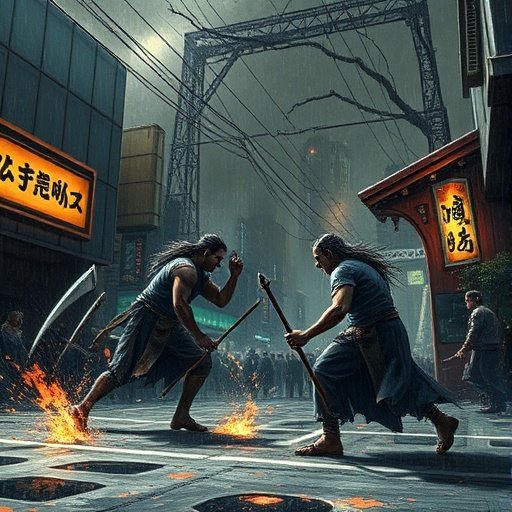A Nostalgic Recap of Why is it Called the Rashomon Effect
A Nostalgic Recap of Why is it Called the Rashomon Effect
Understanding the Origins of the Rashomon Effect
The term “Rashomon Effect” has become a significant cultural and psychological concept, often used in literature, film studies, psychology, and legal analysis. But *Why is it called the Rashomon Effect*?
To understand its roots, we must journey back to **1950**, when the legendary Japanese filmmaker **Akira Kurosawa** released the cinematic masterpiece Rashomon. This ground-breaking film forever altered the way stories are told and how truth is perceived.
Rashomon was not just a film—it was a philosophical inquiry into human nature and subjective reality. It introduced a narrative technique where the same event is recounted by different characters, each presenting their own perspective, often contradictory and self-serving. This storytelling technique revealed the malleability of memory, the unreliability of eyewitnesses, and the multiplicity of truth.
The Film That Sparked a Psychological Phenomenon

A Nostalgic Recap of Why is it Called the Rashomon Effect
Kurosawa’s Rashomon is set in 12th-century Japan, revolving around the murder of a samurai and the rape of his wife in a forest.
The event is narrated from four different points of view: a bandit, the samurai’s wife, the samurai (through a medium), and a woodcutter who witnessed the incident. Each character tells a version that not only differs in detail but completely alters the moral implications and motivations.
What stood out about the film was not just its plot but its meta-commentary on truth. Kurosawa didn’t confirm which version was the real one. This ambiguity created a lingering discomfort and forced audiences to question their own perception of truth and how memory and bias shape our understanding of reality.
Coining of the Term: Rashomon Effect
The term “Rashomon Effect” was coined much later, by anthropologist Karl G. Heider in 1988, to describe the phenomenon of contradictory interpretations of the same event by different people. In other words, when multiple witnesses give conflicting accounts, each seemingly truthful but mutually exclusive, we are witnessing the Rashomon Effect.
This effect has since become a **powerful analytical lens** in various disciplines:
Psychology : To understand memory distortion, false memories, and personal biases.
Law and Criminal Justice : For evaluating eyewitness testimonies and the subjectivity of narratives.
Journalism and Media : In highlighting how different media outlets portray the same event differently.
Sociology and Anthropology : When studying oral histories, traditions, and cultural perceptions of truth.
The Rashomon Effect in Popular Culture and Real Life
The Rashomon Effect is not confined to academic discussions—it is deeply ingrained in **popular culture** and **real-world scenarios**.
In Cinema and Television
Many filmmakers have paid homage to Kurosawa by adopting the Rashomon-style narrative. Notable examples include:
Shows differing perspectives of a couple’s relationship-Gone Girl” (2014)
“The Affair” (Showtime): Each episode presents contrasting viewpoints of the same events.
Depicts a terrorist attack from multiple perspectives-Vantage Point” (2008):
Hero” (2002): Tells a legendary assassination plot through conflicting stories.
These adaptations highlight how **human experiences are filtered through emotion, belief, fear, and desire**—the very foundation of the Rashomon Effect.
In Courtrooms and Crime Scenes
Eyewitness accounts often contradict each other, even when witnesses are earnest and honest. This is a **core challenge in legal proceedings**. The Rashomon Effect shows us how **perception is not equal to reality** and calls for a deeper evaluation of **forensic evidence, motive, and corroboration**.
In Historical Narratives and Politics
History is often written by the victors, but alternative versions exist, challenging the official narratives. The Rashomon Effect underscores how **national memories, war accounts, and revolutions** can be interpreted in drastically different ways, depending on **who tells the story**.
Psychological Insights Behind the Rashomon Effect

A Nostalgic Recap of Why is it Called the Rashomon Effect
At its core, the Rashomon Effect is deeply connected to **cognitive biases** and **psychological defense mechanisms**. Some of the key psychological principles at play include:
Confirmation Bias: People interpret information in a way that confirms their preconceptions.
Self-Serving Bias: Individuals tend to present themselves in a favorable light, even subconsciously.
-Memory Reconstruction: Human memory is not a perfect recording; it’s a reconstructive process, influenced by emotions, time, and suggestion.
-Cognitive Dissonance: Contradictory truths cause discomfort, leading individuals to selectively interpret reality to reduce mental stress.
These mechanisms explain why two people can **witness the same incident but recall entirely different versions**, both genuinely believing their own story.
Why the Rashomon Effect Still Resonates Today
We live in an age of **information overload and digital fragmentation**. Social media, echo chambers, and selective exposure to information have **amplified the Rashomon Effect globally**. From **political debates** to **social justice movements**, we see polarized narratives all around us, each claiming to be the truth.
In such a landscape, the Rashomon Effect serves as a **reminder to approach narratives with humility and critical thinking**. It urges us to recognize our limitations in knowing the absolute truth and to acknowledge **the diversity of human experience**.
The Rashomon Effect as a Storytelling Tool
For writers, filmmakers, and creators, the Rashomon Effect is a **narrative goldmine**. It allows for:
**Layered storytelling** that deepens character development.
**Ambiguity and tension** that keeps the audience engaged.
**Moral complexity**, where there are no heroes or villains, only perspectives.
It teaches us that **truth is not monolithic**. It is fragmented, interpreted, and deeply personal.
A Lasting Legacy
Seventy years after its release, *Rashomon* still **influences modern storytelling, philosophy, and cultural studies**. The fact that one film could spark such a far-reaching discourse about the nature of truth, memory, and human perception speaks to Kurosawa’s genius and the **universal relevance of the Rashomon Effect**.
As we continue to navigate complex social issues, differing narratives, and the quest for truth, the Rashomon Effect remains an invaluable concept that challenges us to **listen deeply, question constantly, and accept ambiguity** as part of the human condition.

